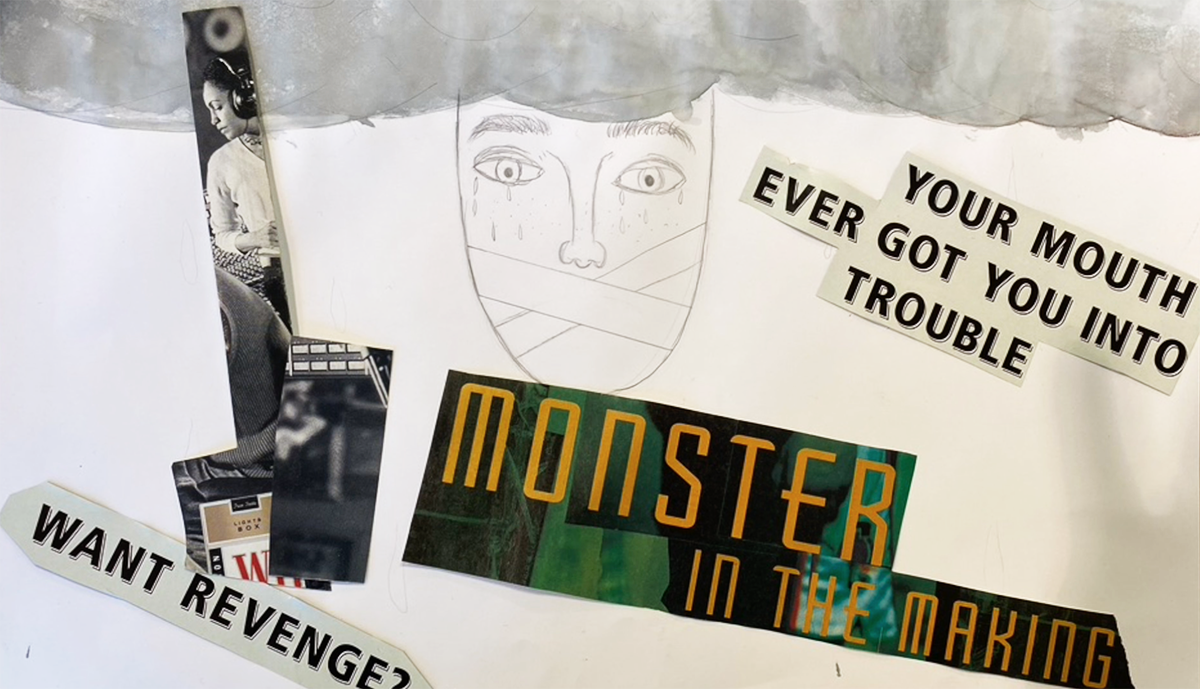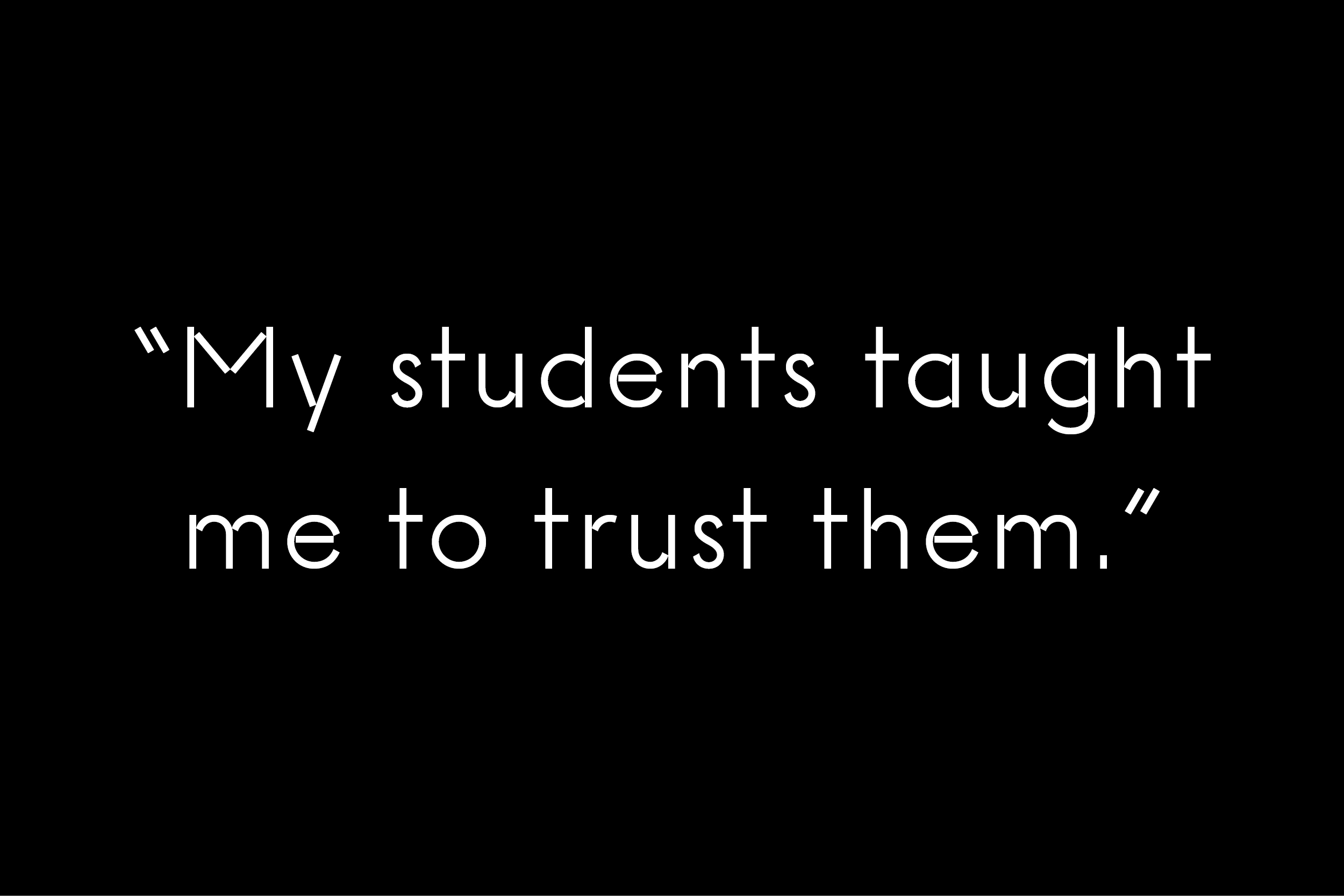
Dear Future Educators,
This project was a labor of love, although also scary at times because of the lack of control I felt while doing inquiry-based teaching and learning. My big idea was to demystify and humanize communities of color that have been targeted by the media and elected officials. This comes at a time when people are being dehumanized more aggressively by people in power in the United States of America, and the media has broadcasted these messages around the world. My students and the communities where they reside have been targeted negatively. This project is based on exploring the counter-narrative to negative stereotypes. Students’ projects are intended to display the positivity of my students and what their communities contribute to the world.
My classes, with the exception of my Advanced Placement drawing class, are very teacher centered. I was nervous about changing my teaching style for my large classes of 30 students, but the inquiry process was well received by most of my students and made them intrinsically motivated. I did a lot of frontloading of content and context because I needed my predominantly Latino students to take Arthur Jafa’s Love is the Message, The Message is Death—a video depicting the joy and tragedies of the African American experience—seriously and not reinforce negative stereotypes. Our school’s African American student population is about 18%, and my African American students have expressed to me their lack of positive representation in the school/community, so it was important to prepare the class to watch Jafa’s video. Using his video made me examine my own practice and keep my African American students in mind when presenting material.
Process
My students taught me to trust them through this project. Most of my students created projects beyond my expectations, which made me realize I might typically shortchange their creativity because I want to make projects accessible to everyone in the class. I also learned to be OK with having what looks and feels like chaos in the classroom, recognizing the energy of students directing their own learning and embracing how incredible it is to see students intrinsically motivated. For the first time, most students in my class were excited to work on their projects, challenging themselves in learning and problem solving.
I noticed students both contributing to and leading aspects of the project. There was one group that organized themselves and bought materials for their project. Although I had bought the materials necessary for them to complete their project, they forgot to check in with me before their purchase. This is an example of the communication and commitment that was happening among the students. Other groups brought together unlikely partners when everyone in the group committed to working together on the project. One group decided to burn a design into wood. This group brought in everything they needed, although I must admit I was extremely nervous about someone using the burning tool getting seriously hurt. The group designated a student who had used that tool before to be responsible for creating the design. Their design, if finished, would have been incredible.
Timing for this project was an issue because we had a teacher strike that interrupted the flow of instruction. The frontloading and preparation for the design was made at the end of the 2nd quarter and the design and project itself was started at the beginning of the 3rd quarter. I had a student that has been known to be difficult in classroom management inserted to my class 3rd quarter. It was a huge obstacle because it was hard to get him to join the classroom dynamic that was already formed through talking circles, collectively established classroom norms, and my honest conversations with students about the lack of experience I had with inquiry-based learning. He was resistant from the very first day he entered my class, but after three weeks he began to work on the project before abruptly having to evacuate the school, along with all of his classmates, due to Covid-19.
Conclusion
Students went from having a vague understanding of a counter narrative to having a grasp on what it was and how to create a unique project that reflected it. The front-loading really helped contextualize the subject matter to the students and strengthen connections to the Museum of Contemporary Art Chicago. My hallelujah moment occurred when one African American student expressed feeling underrepresented in the class and disengaged, and I asked all the other students to make an effort to include the student into the group by allowing her to add symbolism that was reflective of her unique experiences with their counter narrative. The group added her contribution and she felt more respected and acknowledged.
I thank the MCA’s Teacher Institute for pushing me to expand my teaching practice. I think inquiry-based learning can engage even the most unengaged student because it treats students as a source of knowledge. It validates what the student knows and can contribute to their own learning experience. I will continue to practice inquiry-based learning in my classroom because I see how it involves the students more holistically than other methods I have tried.
—Jesus
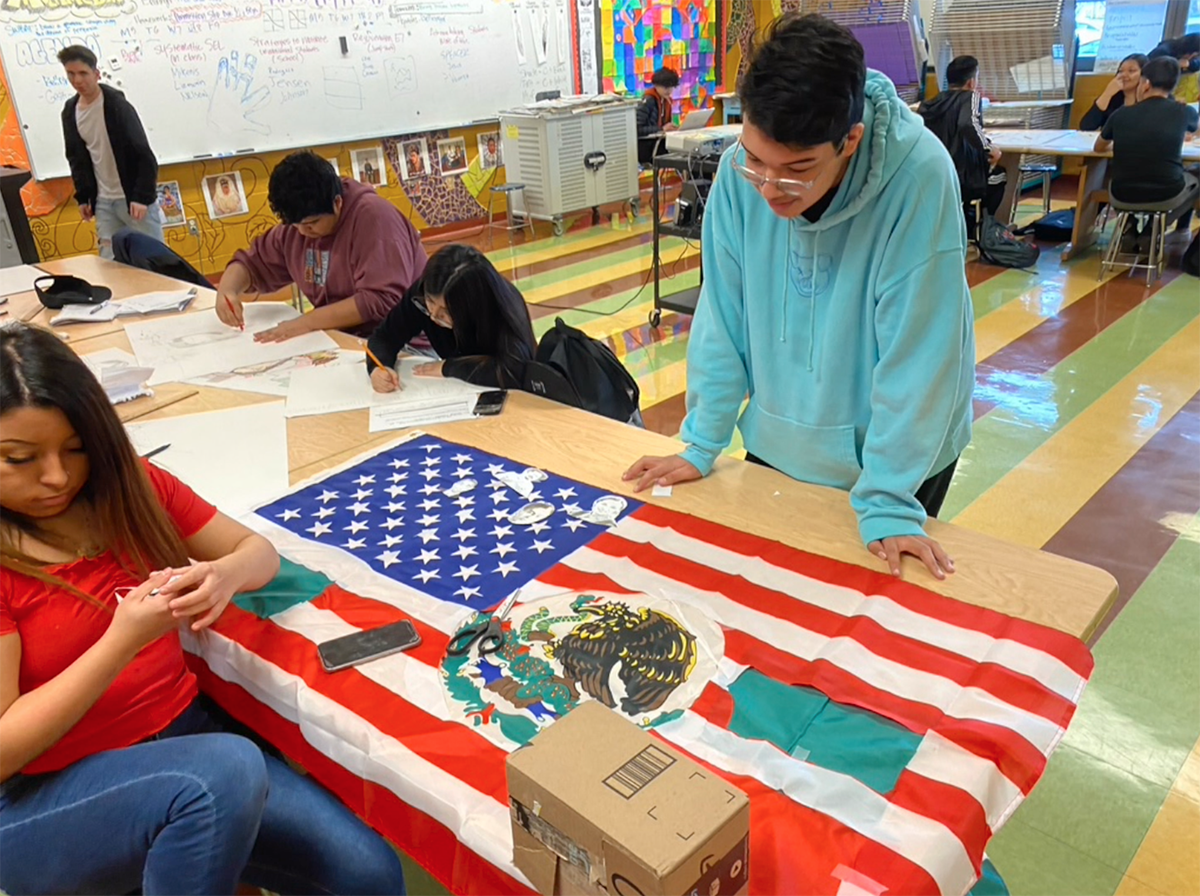
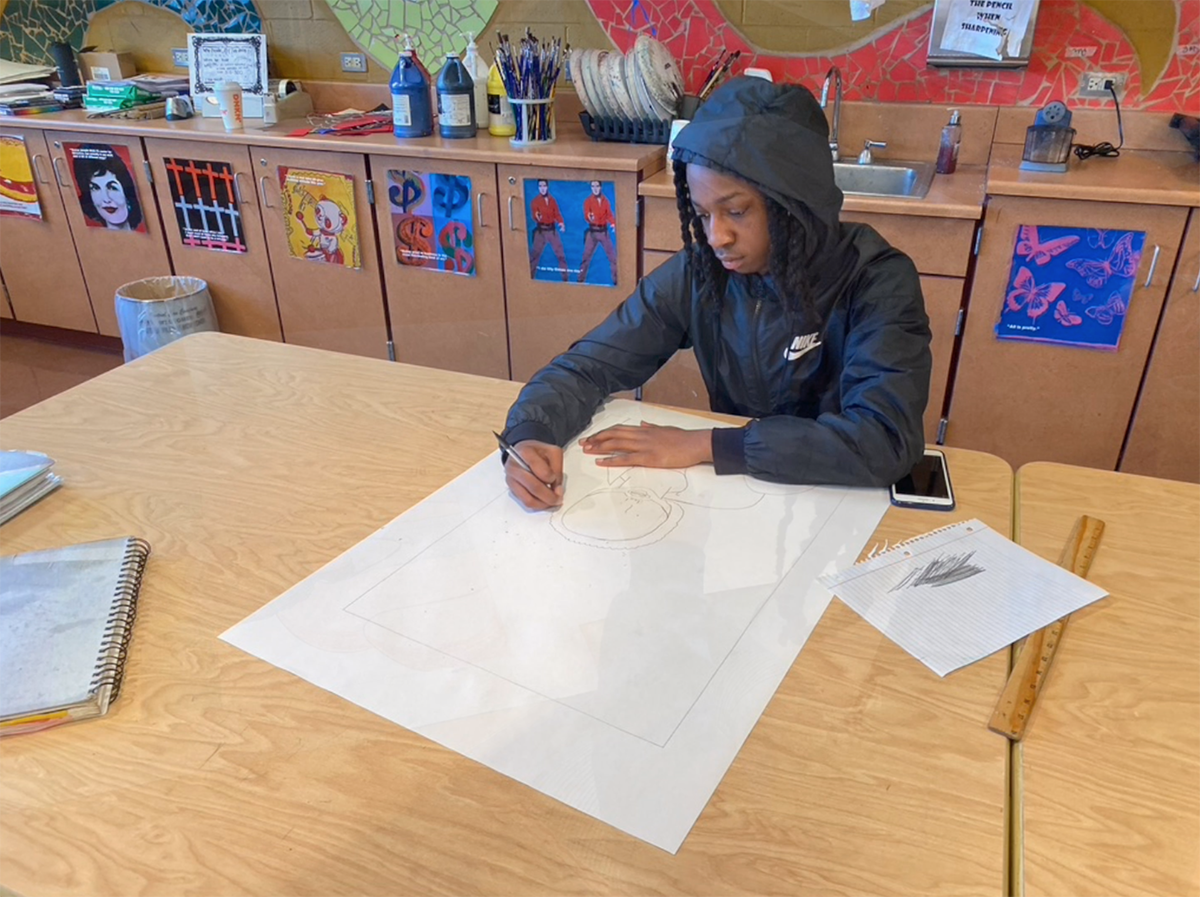
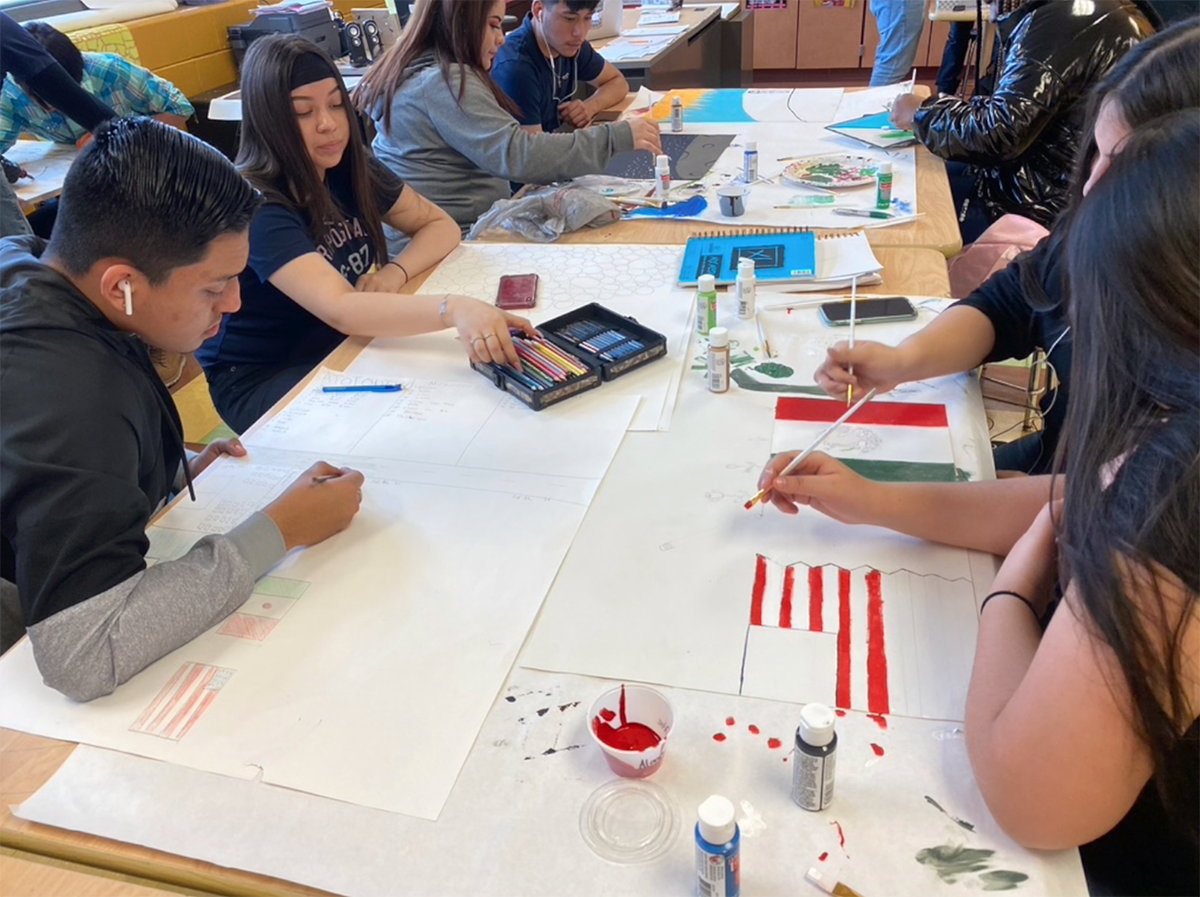
CREATE A COUNTER NARRATIVE
Invite students to discuss how the media reinforces negative stereotypes of black and brown communities. How can you counter that general narrative? Using a medium of their choosing, give students the opportunity to create an artwork that is a rebuttal of general narratives and false stereotypes.
Jesus Sanchez
Greater Lawndale High School for Social Justice
Jesus “Azteca” Sanchez is a visual artist and poet that teaches at the high school level in Chicago’s culturally rich Little Village area. Little Village is a predominantly Mexican community on the southwest side of Chicago that has a history of being politically independent and having strong community activism. He has used his poetry and art as a tool since the age of 16 to politically engage his community and other communities of color in Chicago. He has been an activist that uses Hip-Hop, visual arts to spread the message of equity in the world and continues to use his own poetry to speak truth to power. He wants his poetry to impact people into becoming more conscious, informed and politically engaged citizens. Jesus Boxed in the 2019 Golden Gloves Tournament and got runner up in the Finals.
